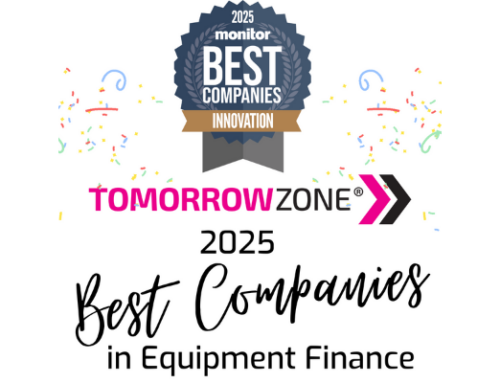
This article was originally published by MonitorDaily in August 2022.
Reprinted with permission from the author.
In the current unpredictable economic circumstances, businesses must figure out how they can continue to grow and remain resilient in the face of financial changes due to the pandemic. Deborah Reuben of TomorrowZone® spoke with Johnathan Brill to discuss what businesses can do as well as his book, Rogue Waves.
Although we can’t predict the future, we can know more about the future than we may think. It takes new skills to view the big picture through a new frame. Asking better questions enables us to be both strategically conservative and aggressive in the face of disruptive change.
I sat down with Jonathan Brill, an innovation leader and global futurist, who spent 25 years running product innovation firms and product innovation capabilities within large organizations, most recently at HP. He authored the best-selling book Rogue Waves: Future-Proof Your Business to Survive and Profit from Radical Change.
Deborah Reuben: What problems did you observe in corporate culture that inspired writing your book?
Jonathan Brill: One of the things I repeatedly heard at HP and with any number of clients is the belief that we manage what we can control and we ignore the rest.
Over the 20th century, on average, there were about four business shocks, or “Rogue Waves,” where multiple, individually manageable waves of change, legal and regulatory shifts, wars, recessions, depressions, monetary issues, energy shocks and so forth, collided to create massive disruptions. These rogue waves have radically shifted the shape of business. A lot of time last century was spent in those collisions, and even more, bailing ourselves out of them.
The question we need to ask isn’t, “How do we manage what we can control?” It’s “How do we manage what we can’t control?” and, “How do we take advantage of the fact that we know these disruptions will happen and use those as non-linear growth events in our companies?”
Reuben: What are rogue waves?
Brill: When 15- to 20-foot waves collide in the deep ocean at just the right angle and sequence, rogue waves are 100- to 120-foot-tall waves that pop up out of nowhere in seconds. Historically we thought rogue waves were one in a 10,000-year phenomenon. Turns out they happen all the time. In major North Sea storms, they happen every eight to 12 hours.
We can radically miscalculate the likelihood of rare events in our business and life. We may never have experienced a major land war or inflationary cycle. The reality is these things happen consistently over time. When you look back a decade, you see a very different picture of what’s plausible and what’s likely.
We disproportionately weigh things we have experienced versus things that are possible. We need to look at that bigger picture. What are those things we haven’t experienced that are possible? Expand your vision about what that is to be rigorous, both financially and operationally, in responding to changes in your external environment, strategy or demand.
Reuben: Companies that stay aware of undercurrents likely to collide and create rogue wave changes over the next decade will have the edge over those not paying attention. What can leaders do today to prepare themselves and their teams to navigate uncertainty?
Brill: Start by looking at the bigger picture. Chapter two of my book discusses 10 major trends shaping the 2020s. At HP, we did $15 million of research over the years about what we can and can’t know about the 2020s and how that should impact what we do now.
That work resulted in making better resilience decisions in the face of COVID-19.
Looking deeper at the data tells you more about the future than you imagine. When you have a process for this, you make better bets, not because you’re smarter than everyone else, but because most of the time, no one else is looking.
The ABC’s of Resilient Growth
Reuben: Can you share a bit about your process and why it is important for leaders to build these skills?
Brill: The goal isn’t to prepare for a pandemic or a rogue wave; it’s to understand the range of plausible futures and how they would impact the “The Four Foes of Growth” (financial, operational, external and strategic). Typically, the shape of those stressors on your company and their impact on customers will be similar. So, you’ll know where process innovations must happen.
In rough waters, you want to flip your kayak faster than the competition, so you come out of the trough faster to capture and sustain growth by thinking a step ahead of your competition. The trillion-dollar question is, how do you do that?
Awareness
If your people don’t know what’s changing around them, then what happens when headlines collide? There’s no reason for them to shift, and most people aren’t even paying attention. Consider the Davos European leadership event in January this year. Weeks before Russia invaded Ukraine, there were no panels on European security order and tensions in Europe. None. What happened next? Jamie Diamond said we’re heading for $150 barrel of oil. That was not fully knowable but was weighable in January, yet no one was paying attention. We can know much more about the future than we imagine if we just think about what happens when these things collide.
Behavior Change
If your people don’t have the skills to take advantage of what’s happening and get off the beach when they know the tsunami’s coming, it doesn’t matter that they’re aware of the issues. This is a major challenge.
Consider the Titanic. There weren’t enough lifeboats. Huge issue. 90 minutes after impact, three-quarters of the crew still wasn’t informed. More importantly, they weren’t trained to get the lifeboats off the ship. It didn’t matter that there weren’t enough lifeboats on the ship, the lifeboats weren’t all released. That’s why people died. People weren’t aware that there was an issue. They didn’t have the skills to get off the ship. If you don’t create awareness of what’s going on and how the environment’s changing, that’s a huge issue. But people also need skills to deal with that change.
Cultural
If our culture makes it impossible to talk about those things on the horizon, for which we do not yet have enough data; if we don’t have a culture where we can say, “I’m not in charge, but I have insight about what happens next,” we have a culture set up for a Titanic moment. When the leader needs to innovate the most and needs to be of the clearest mind, no one is there to support them. No one is there to innovate faster than they tell people what to do.
That happened on the Titanic. In that moment of radical change, the captain froze and failed to communicate. He was supposed to retire a couple weeks later. Suddenly his entire world was upended. If you don’t have people who can innovate on your behalf when your entire strategy fails because they don’t know what’s going on and don’t have the skills to help you right the ship, you sink.
Reuben: What key mindset shifts can help leaders raise awareness and enable innovation in times of uncertainty?
Brill: First, test reality more effectively. When you’re moving faster, the likelihood of your assumptions no longer being true, even if they once were, is greater.
Second, observe systems. How do you look systemically at what’s going on as opposed to looking at all the individual details? The problem at Davos wasn’t that headlines weren’t there; they didn’t imagine what would happen when they inked.
Third, generate a range of plausible futures. We do long-term planning every year, and we say it will be 6% better or worse next year than this year. Going into 2020, I think about two companies, AMC Theaters and Zoom. AMC Theaters didn’t think there’d be a 96% decrease in revenue on a Tuesday. No one considered that. But we need to also uncouple threads from opportunities. With Zoom, no one considered the opportunity to do 26 times growth.
The final method is experimentation. I work with companies to improve their innovation investments. Looking at their portfolios and risk profiles, I almost universally see innovation by doing the same thing you’re doing, just better and better. General Motors is an example. From the non-crank automobile to cars becoming better over time, different colors, automatic transmission and even a nuclear-powered model. They did everything they could to make the automobile better and better. The problem is their entire business model was selling cars every three years to dealers who made their money maintaining that car for three years. After which, they sell a new car. Doing better and better and trialing the same experiment again and again created a product that killed the cash flywheel.
Instead of trying the same experiment repeatedly, we need to experiment as a portfolio. Try a lot of different things. Balance high-risk/high-opportunity innovation investments with medium-risk, medium-opportunity investments and low-risk investments that will have massive value over time.
Think about your innovations like an investor. Then you’ll be creating the right portfolio of innovation so you’re getting payoffs, and no matter which ones succeed or fail, you’ll get the right payoffs and timelines in the right order.
About the authors:
Jonathan Brill is an in-demand speaker, author and advisor preparing leaders to profit from radical change and innovate under uncertainty. He holds a degree in industrial design from Pratt Institute, spent years as a research consultant to the MIT Media Lab and in management training at the Stanford University Graduate School of Business. Learn more about him at
jonathanbrill.com.
Deborah Reuben, CLFP, is CEO & Founder of TomorrowZone, a technology strategy consulting firm bringing forward-thinking insights and original ideas to help companies gain efficiencies and design roadmaps for the future. She holds many industry leadership positions and authored The Certified Lease & Finance Professionals’ Handbook 6th-9th editions.





